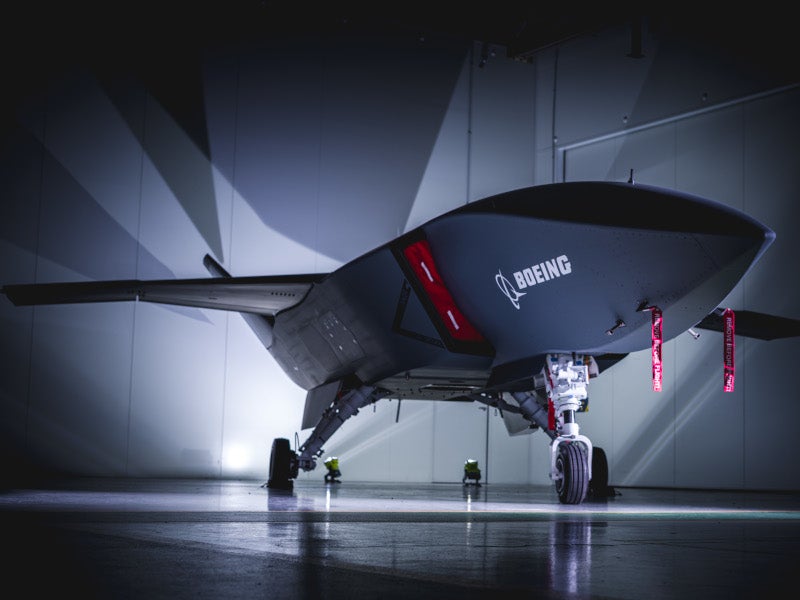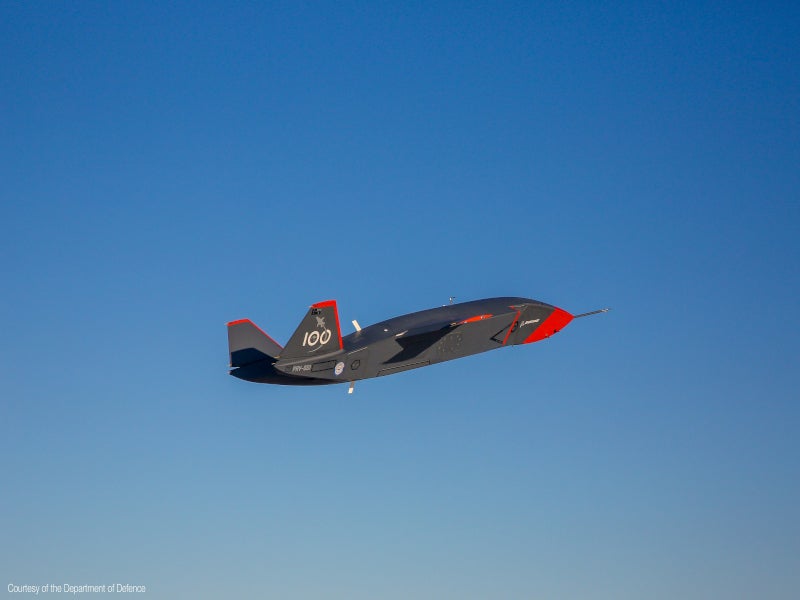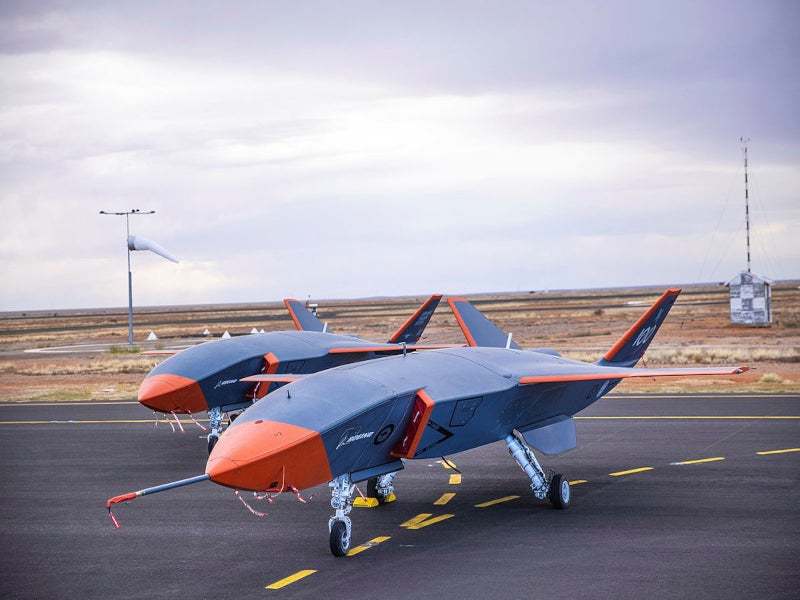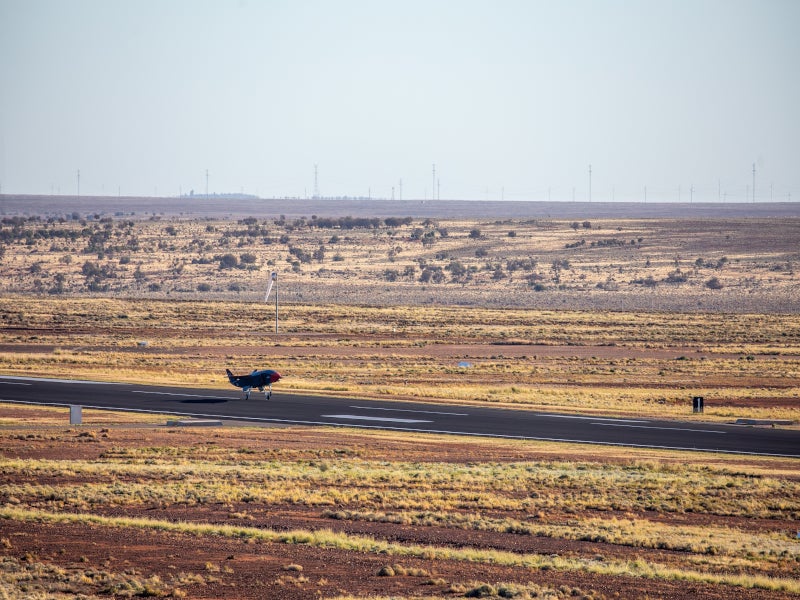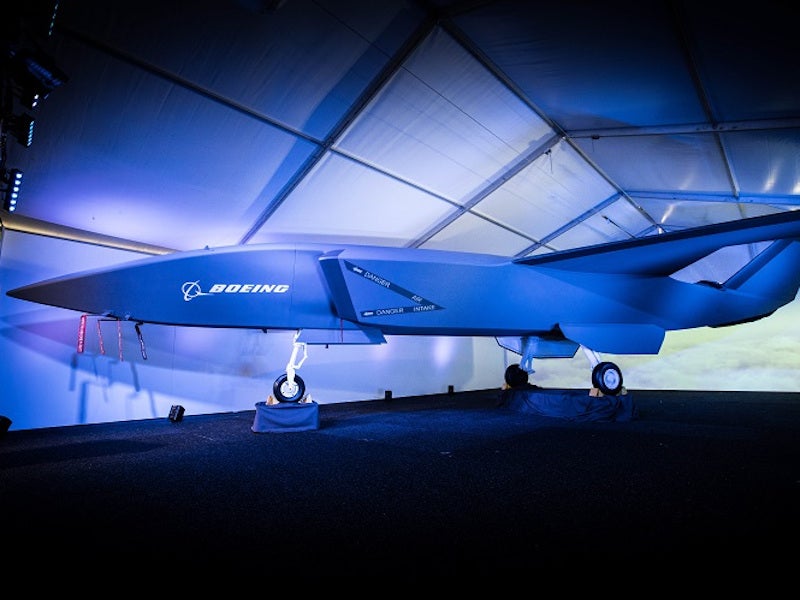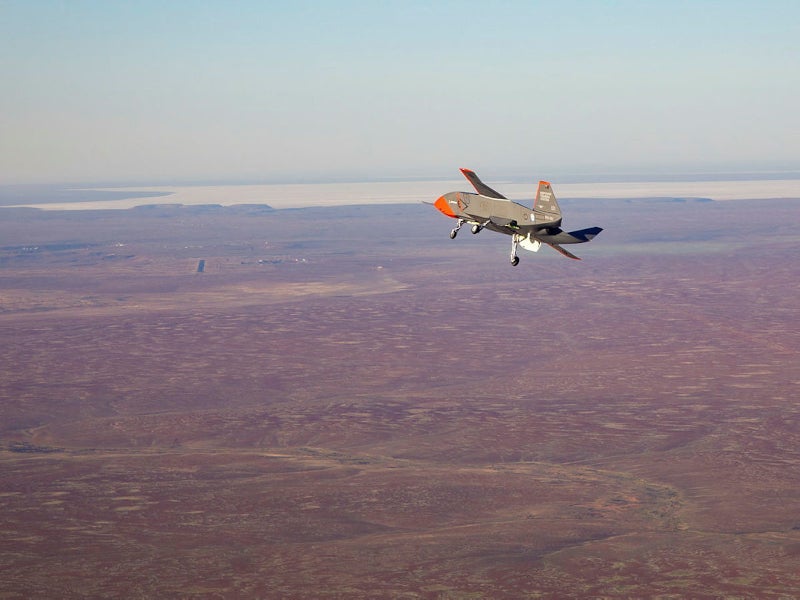MQ-28A Ghost Bat, commonly known as Loyal Wingman, is a new unmanned aerial vehicle (UAV) being developed by Boeing Australia in collaboration with the Royal Australian Air Force (RAAF).
The advanced unmanned system can fly alongside the existing manned aircraft and uses artificial intelligence (AI) to conduct teaming missions. It is capable of performing surveillance, reconnaissance, and early warning missions.
The UAV is being built as a part of the Loyal Wingman – Advanced Development Programme. It will be used for safeguarding and supporting Australia’s most valuable combat aircraft, such as Joint Strike Fighters (JSF), Super Hornets and Growlers and their pilots. The unmanned aircraft will also help enhance the agility and capability of the Australian Defence Force.
The uncrewed aircraft was formerly known as Boeing Airpower Teaming System (ATS). It was officially named the MQ-28A Ghost Bat in March 2022. However, the name remains ATS for global customers.
The MQ-28 is also Boeing’s largest investment in a new unmanned aircraft programme outside the US.
The Loyal Wingman programme created nearly 100 high-tech jobs in Australia, which helped recover the economy during the Covid-19 pandemic.
The Ghost Bat marks a major leap forward in autonomous aviation for increased efficiency, reduced risks and enhanced strategic capabilities. It is expected to enter service with the RAAF between 2024 and 2025.
Loyal Wingman development details
The RAAF and Boeing Australia initially joined forces to develop three Loyal Wingman aircraft prototypes under the Loyal Wingman – Advanced Development Programme.
The unmanned aircraft is a concept demonstrator of ATS, which Boeing Australia is developing for the global defence market. ATS is Boeing’s first defence platform to be designed and built in Australia in more than 50 years.
Boeing introduced the UAV at the Australian International Airshow in Avalon in February 2019. The company unveiled the first unmanned Loyal Wingman aircraft to the RAAF in May 2020.
The major fuselage structural assembly of the unmanned aircraft was completed in February 2020. The aircraft stood on its landing gear, and its electrical system was powered for the first time in April 2020.
Consequently, the Loyal Wingman unmanned aircraft moved to the next stage for the installation of systems and functional testing.
In February 2021, the aircraft’s inaugural flight was conducted, and since then, the programme has progressively expanded the aircraft’s flight envelope to adapt and evolve.
The Australian Government announced in March 2021 that it will co-develop three more Loyal Wingman aircraft with Boeing. The contract is valued at A$115m ($89.2m) over three years and increases the MQ-28A Ghost Bat production capability to six for the RAAF.
In May 2022, the federal government announced an additional A$454m ($314.9m) investment to acquire seven more aircraft, bringing the total count of Loyal Wingman being purchased for the RAAF to 13. The government previously invested up to A$40m ($25.6m) to develop the Loyal Wingman aircraft.
The programme has been supported by more than 55 companies based in Australia to progressively advance the flight characteristics and capabilities of the aircraft.
Testing programme details
The first Loyal Wingman aircraft successfully completed its maiden test flight at the Woomera Range Complex in South Australia in March 2021.
The aircraft initially underwent a series of taxi tests to assess ground handling, pilot interface navigation, and control. Following these tests, the aircraft accomplished a successful take-off using its own power.
It then proceeded to fly along a predetermined route at varying speeds and altitudes to validate the performance of the aircraft design and its systems.
In November 2021, two aircraft successfully completed flight missions at the Woomera Range Complex. The first aircraft showed various critical capabilities to continue the expansion of the flight envelope, including its first raising and engagement of landing gear. The second aircraft completed its first flight successfully.
A digital twin of the aircraft successfully demonstrated multiple payloads, crewed-uncrewed teaming capabilities, and semi-autonomous behaviours in an all-digital environment in December 2021.
The testing involved multiple aircraft in a threat environment, performing mission tasks while operating in a teaming arrangement with crewed aircraft.
Loyal Wingman design and features
The fuselage of Loyal Wingman is made of composite materials using an advanced resin-infusion process, resulting in a lighter and more durable platform. Digital engineering and advanced composite materials will further help achieve the aircraft’s cost and agility goals.
The drone has a length of 11.7m and a wingspan of 7.3m. The UAV will have the capability to fly at a subsonic speed and attain a range of more than 2,000nm to achieve fighter-like performance.
The autonomous aircraft will be capable of flying independently with the use of AI and will maintain a safe distance from manned aircraft. It will be integrated with sensor packages, which allow intelligence, surveillance and reconnaissance (ISR), tactical early warning missions, and various other operations.
The nose section of the aircraft can be quickly reconfigured with different sensor payloads to perform suitable missions rapidly. It is 2.5m long and will offer a storage volume of more than 1.5m³.
The unmanned aircraft system will be fitted with sensors that will be placed in swappable modules. It allows a manned aircraft to simultaneously carry out surveillance, navigation, and tactical operations with the help of modular ATS payloads aboard multiple drones.
The aircraft is runway independent and powered by a commercial turbofan engine.
Contractors involved
Defence and security company BAE Systems Australia is responsible for supplying management solutions and simulation capability for the unmanned aircraft. It also provides flight control computers and navigation equipment for the drone.
Boeing selected the defence manufacturing company Ferra Engineering to deliver precision machine components and sub-assemblies for the aircraft.
Australia-based electronic engineering company Micro Electronic Technologies is responsible for delivering wiring looms for the UAV while aerospace engineering company RUAG Australia supplies the landing gear system for the Loyal Wingman programme.
Electrical wiring manufacturer AME Systems was contracted to supply wiring looms to support the vehicle while Allied Data Systems was selected to provide the solid-state power control for the aircraft.
Other contractors involved in the project include Australian defence manufacturing company Rosebank Engineering, aerospace and defence precision machine components manufacturer Lovitt Technologies Australia, and precision-engineered solutions provider Marand Precision Engineering.

